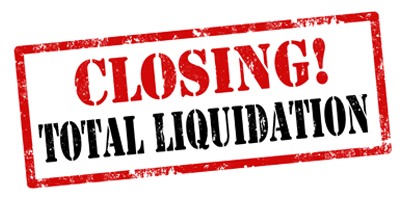Company Liquidation Things To Know Before You Buy
Company Liquidation Things To Know Before You Buy
Blog Article
More About Company Liquidation
Table of ContentsCompany Liquidation for Dummies6 Easy Facts About Company Liquidation DescribedThe smart Trick of Company Liquidation That Nobody is DiscussingSome Known Facts About Company Liquidation.Getting My Company Liquidation To Work
A liquidator is particularly assigned to look after the ending up of a firm's events in order for it to be shut down generally when the business is going bankrupt. The liquidator is an unbiased 3rd party that supervises the sale of company assets in order to pay off any kind of arrearages.Their role includes, but is not limited to: Neutral Overseer: A liquidator is charged with serving as an unbiased third party to look after the entire firm liquidation process. Develop Declaration of Affairs: Liquidators must develop a comprehensive declaration of affairs document. This record is distributed to lenders, outlining the present financial standing of the service at the time of its liquidation.
After the liquidation of a company, its presence is erased from Companies Residence and it stops to be a lawful entity. If directors browsed the procedure uncreative, there would be no fines or personal liability for solid debts expected. Now, with a fresh start, directors can check out new service possibilities, though specialist assessment is suggested.
The Only Guide to Company Liquidation
For instance, if greater than 90% of all company investors concur, liquidation can happen on short notice within 7 days, the minimal legal notification for creditors. Nonetheless, generally, the larger the liquidation and the even more assets and funding business has, the longer the process will take. 'Do I have to pay to liquidate my company?', the answer will depend on whether your service has any type of possessions remaining when selling off.

We understand that no 2 companies coincide, which is why we will take the time to learn more about your business so we can recommend the very best strategy for you. We just operate in your best rate of interests, so you can be completely confident in the service we give.
The Definitive Guide for Company Liquidation
In the UK, there is a set procedure to closing More about the author down or reorganizing a limited firm, whether it is solvent or financially troubled. This process is referred to as liquidation and can only be taken care of by a licensed bankruptcy professional (IP) in accordance with the Bankruptcy Act 1986. There are four primary sorts of firm liquidation process: Financial institutions' Voluntary Liquidation (CVL); Required liquidation; Administration; and Participants' Volunteer Liquidation (MVL).

In these situations, it is important that the business ceases trading; if the organization remains to trade, the directors can be held personally accountable and it could cause the insolvency expert reporting wrongful trading, recognized as misfeasance, which may bring about lawsuit. The directors select a bankruptcy specialist and as soon as this has been concurred and confirmed, there is a meeting with the investors.
The supervisors are no longer involved in what occurs, including the sale of the company's possessions. If the directors want any of the possessions, they can inform the IP.
Company Liquidation for Dummies
The main distinction is that the business's lenders put on the court for a winding up order which requires the financially troubled company right into a liquidation procedure. Creditors take this action as a last hotel due to the fact that they haven't obtained repayment with other kinds of negotiation. The court appoints a bankruptcy specialist, additionally referred to as an More Bonuses official receiver, to perform the obligatory company liquidation procedure.
This kind of company liquidation is not volunteer and directors' conduct is reported to the UK's Assistant of State once the liquidation process has been finished. Any kind of director that stops working to coordinate with the IP or has been entailed in director misconduct, or a deceitful act, might result in major consequences.
It is used as a method to secure the business from any lawsuit by its lenders. The supervisors of the firm agree to make routine settlements to settle their financial obligations over a period of time. The appointed manager handles the volunteer administration process, and gets the payments which they after that disperse to financial institutions according to the agreed amounts.
The Best Strategy To Use For Company Liquidation
This provides the firm with time to create a strategy going ahead to rescue the official source company and prevent liquidation. At this point, supervisors hand control of the company over to the selected administrator. If a firm is solvent yet the directors and shareholders desire to close the organization, a Participants Volunteer Liquidation is the right choice.
The company liquidation procedure is taken care of by a liquidator appointed by the supervisors and shareholders of the firm and they need to sign an affirmation that there are no lenders remaining. The liquidation procedure for an MVL resembles that of a CVL in that possessions are understood yet the earnings are dispersed to the supervisors and the shareholders of the firm after the liquidator's charges have been paid.
Report this page